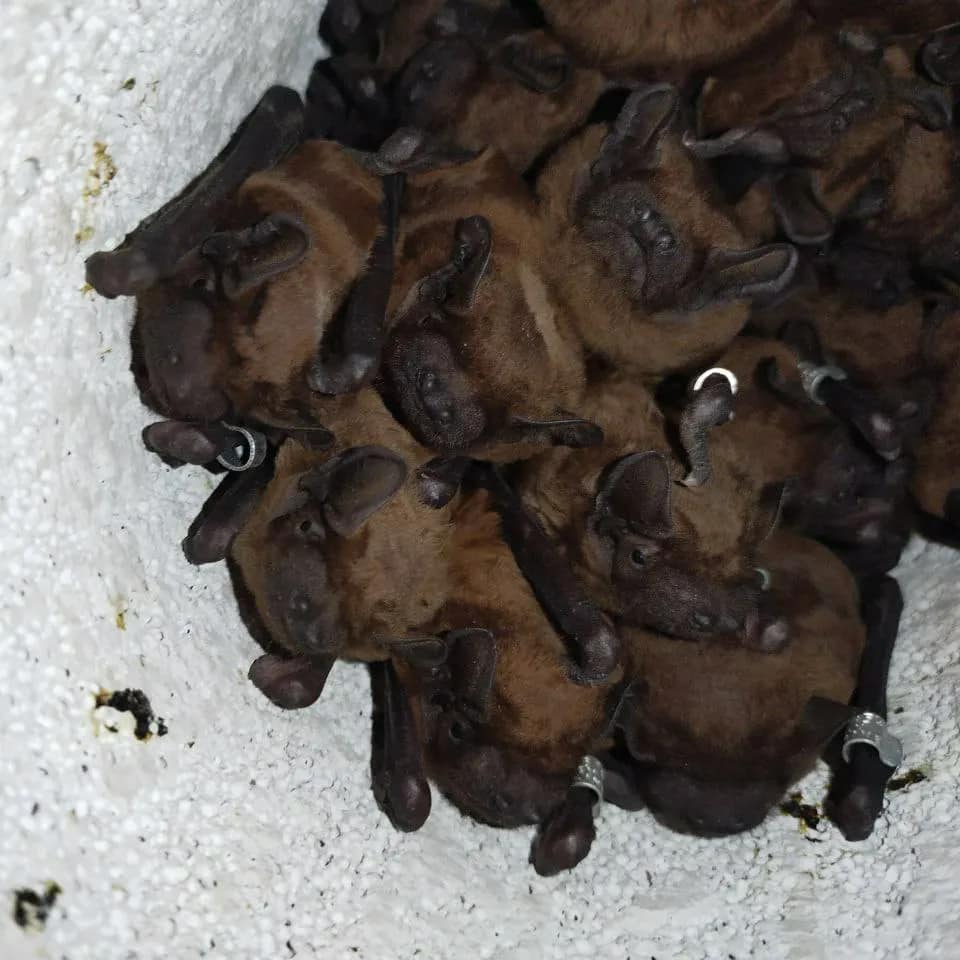Social hunting strategies are already known in many animal species whose prey is irregularly distributed in the landscape. Now it has been documented in the case of the Common noctules (Nyctalus noctula) that groups of these animals join together to form a mobile sensory network in order to hunt for prey together. During the search, the animals are in contact with each other and exchange information about their environment via acoustic sounds. In this way, information about insect accumulations is also passed on to conspecifics. This is of great advantage to the animals, as the distance over which the bats can locate the insects by ultrasound is relatively small, about 10 -15 metres, which makes it difficult to track down the prey. In contrast, the animals perceive their own conspecifics over much greater distances, ideally up to 160 metres. Searching in a group is therefore more efficient.
For the study, flight patterns of 81 individuals were investigated in the agricultural landscape of the uckermarsh. Special transmitters were used to send signals to a network of antennas (the so-called ATLAS system). This made it possible to record the movement of dozens of animals simultaneously. The researchers observed that the animals fan out after a flight to cover a relatively large area. However, they remain in acoustic contact or within range. As soon as an animal in the network finds a swarm of prey insects, its neighbours are informed by changes in flight movements and by ultrasonic calls specifically used for insect hunting, which gradually make all animals in the sensory network aware of the rewarding hunting area. The researchers compared the foraging efficiency of “networked” bats with that of individual hunters depending on group size and food distribution.
Using a computer model, it was statistically proven that ‘networked’ animals needed 40% less time to locate prey than individuals who ignored their conspecifics during the hunt. By hunting in groups, the animals can thus find prey even in large-scale cultivated landscapes and effectively contribute to the control of agricultural insect pests. It should be noted that this requires consistent protection of bats and their roosting networks even in intensively used landscapes, because if the local population becomes too small, it is no longer possible for the animals to form efficient networks and find food quickly and reliably.

Original study:
Roeleke, M., Schlägel, U. E., Gallagher, C., Pufelski, J., Blohm, T., Nathan, R., … & Voigt, C. C. (2022). Insectivorous bats form mobile sensory networks to optimize prey localization: The case of the common noctule bat. Proceedings of the National Academy of Sciences, 119(33), e2203663119. https://doi.org/10.1073/pnas.2203663119
